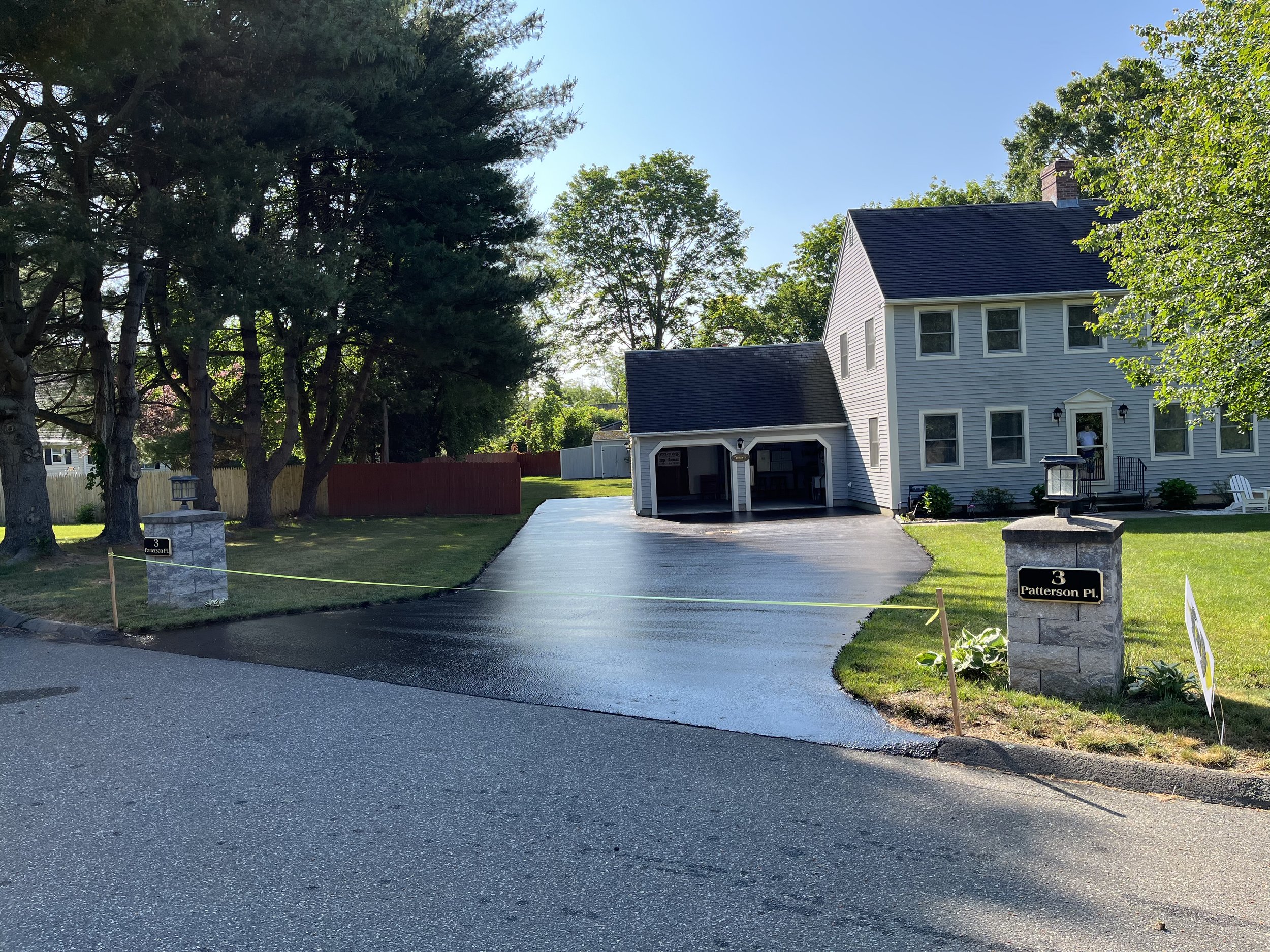Cold Mix Asphalt Vs. Hot Mix Asphalt: Which Is Right for You?

Composition Distinctions
Cold mix and warm mix asphalts differ dramatically in their composition, with distinctive qualities that affect their performance and applications. Cold mix asphalt is created by emulsifying the asphalt binder with water and an emulsifying agent prior to mixing it with accumulation. This approach enables the asphalt to be practical at reduced temperature levels, making it excellent for momentary fixings and for use in colder weather. Warm mix asphalt, on the various other hand, is manufactured at heats, normally in between 300-350 ° F, which aids to achieve better compaction and a much more sturdy end product. The warm mix asphalt manufacturing process entails heating the aggregate and asphalt binder independently before incorporating them at the asphalt plant.
Moreover, cool mix asphalt often tends to be much less thick and a lot more versatile than warm mix asphalt. This flexibility makes it better suited for areas with higher levels of movement, such as driveways or roadways with rush hour. On the other hand, warm mix asphalt is understood for its high durability and resistance to rutting and cracking, making it a recommended selection for freeways and high-traffic roads where longevity is essential.
Setup Process Differences
The procedure of installing cool mix and hot mix asphalt exhibits significant variances in their procedures and needs. In comparison, hot mix asphalt necessitates a more sophisticated installation process. Due to the home heating demands, warm mix asphalt setups are typically brought out by professionals with specific tools, ensuring a more long-term and structurally audio outcome.
Resilience and Durability Aspects
When taking into consideration asphalt choices, resilience and longevity are crucial variables to examine for long lasting pavement efficiency. Hot mix asphalt (HMA) is recognized for its outstanding sturdiness and durability.
In terms of long life, HMA normally surpasses CMA due to its exceptional stamina and resistance buildings. HMA pavements have a longer life span, requiring much less frequent repair services and maintenance, which can convert to cost financial savings over time. Furthermore, HMA pavements are a lot more easily adjustable to satisfy specific job requirements, additionally boosting their toughness.
Cost Considerations
Taking into consideration the financial effects is an essential facet when evaluating the option in between hot mix asphalt (HMA) and cold mix asphalt (CMA) for sidewalk tasks. While the initial expense of warm mix asphalt is typically more than that of cool mix asphalt, HMA usually offers a much more cost-efficient solution in the long run because of its premium read more durability and my sources durability. HMA is understood for its capacity to withstand rush hour tons and extreme weather, reducing the need for frequent repair work and maintenance. On the other hand, chilly mix asphalt is a lot more economical in advance however may need even more regular patching and resurfacing, causing greater maintenance expenses gradually.
In addition to material prices, it's vital to think about the costs connected with installment and upkeep when comparing HMA and CMA. HMA usually calls for specific devices and experienced labor for proper installment, which can influence general project prices. On the other hand, CMA is easier to work with and can often be used utilizing simpler methods, potentially decreasing installation expenditures. Eventually, the choice between HMA and CMA should think about not just the preliminary cost however also the lasting financial ramifications to identify one of the most affordable alternative for the particular sidewalk project.
Environmental Impact Comparison
Contrast of the ecological impacts between warm mix asphalt (HMA) and cool mix asphalt (CMA) reveals distinct differences in sustainability methods. HMA manufacturing requires high temperatures, bring about increased energy usage and greenhouse gas discharges. The procedure additionally releases unstable natural substances (VOCs) and dangerous air contaminants (HAPs) right into the atmosphere. On the other hand, CMA is generated and applied at lower temperatures, decreasing energy usage and discharges significantly. The lower production temperature levels of CMA cause decreased fuel intake and reduced degrees of carbon dioxide emissions, making it a more ecologically pleasant alternative.
Moreover, making use of CMA often includes reusing existing asphalt pavement, promoting source preservation and reducing the quantity of waste sent out to garbage dumps. This recycling aspect better boosts the special info sustainability of CMA contrasted to HMA. In general, when thinking about the environmental influence, CMA arises as a much more environmentally lasting option because of its reduced power demands, reduced exhausts, and the capacity for recycling existing products. By going with CMA over HMA, road building and construction projects can add favorably to environmental preservation efforts.
Conclusion
In verdict, the choice between cool mix asphalt (CMA) and hot mix asphalt (HMA) depends upon numerous factors such as structure, installment process, toughness, longevity, cost, and ecological influence. cold mix asphalt. While CMA uses a affordable and quick option for minor repairs, HMA ensures superior resilience and longevity for rush hour areas. Think about these variables thoroughly to determine which sort of asphalt is the right selection for your paving needs

Thinking about the financial ramifications is an essential element when assessing the selection between hot mix asphalt (HMA) and cool mix asphalt (CMA) for pavement tasks. While the preliminary price of hot mix asphalt is normally greater than that of cold mix asphalt, HMA commonly gives a more affordable remedy in the long run due to its exceptional longevity and longevity. asphalt patch repair.Contrast of the environmental effects in between hot mix asphalt (HMA) and chilly mix asphalt (CMA) exposes distinctive distinctions in sustainability techniques.In conclusion, the choice between chilly mix asphalt (CMA) and hot mix asphalt (HMA) depends on different variables such as make-up, installment procedure, resilience, durability, expense, and environmental effect